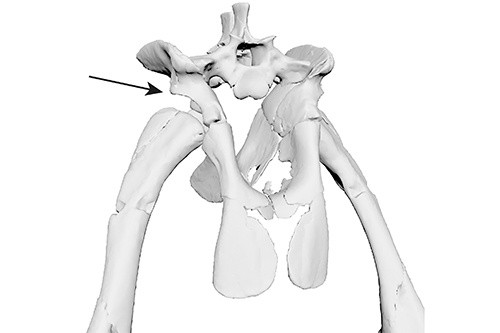Archosaurs, the ancient relative of crocodiles and birds, were some of the largest land and air creatures during the Mesozoic era. Research led by the University of Bristol constructed three-dimensional models to demonstrate the evidence from fossils that show the evolution of posture in these creatures.
The study, conducted alongside the Royal Veterinary College, was recently published in the journal Scientific Reports. They focused on the hindlimb of a small ancient reptile called the Euparkeria capensis, which roamed the Earth nearly 245 million years ago during the Triassic Period.

The small creature was commonly found in modern-day South Africa. The authors noted that there had been several hypotheses proposing the stance and gate of the species, as some scientists believed the Euparkeria sprawled on all four legs. In contrast, others believe they had a semi-erect posture while walking.
Using micro-computed tomography scans of various specimens, researchers found results that revealed new information about the hindlimb. The team describes the foot and ankle joint structure plus the hip bones or pelvis as having prominence not previously known.
The Euparkeria Dinosaur
The Euparkeria species had been identified during the early 1900s as the last known link between modern crocodile and bird species. It is believed that the common ancestor may reveal why the locomotion of the two separate species became different from birds now being two-legged with an upright posture. On the other hand, crocodiles remained quadrupedal (four-legged), with a sprawling posture.
Oliver Demuth and Professor Emily Rayfield from the University of Bristol, alongside John Hutchinson from the Royal Veterinary College, reconstructed the Euparkeria to highlight the structure of its pelvis. Above the hip joint is a tiny covering called a super-acetabular rim, which enabled the creature to tuck its limbs under its body to stand upright despite having four legs.

Evolution caused crocodiles to lack this rim as they became amphibians, which is why they sprawl on four legs today. The Eupoarkeria's unique "pillar-erect" joint allowing them to stand upright made the team ponder if they were sprawling less and had an upright posture most of the time.
READ: Which Dinosaur Bone Helps Support Their Weight?
Computer Simulations of Posture & Movement
While reconstructing the Euparkeria's bone structure, the team estimated how the dinosaur moved when it was alive. The simulations demonstrated how the thigh bone could have rotated during movement and the hip bones and ankle joints.
The team also demonstrated that if the hindlimbs were upright as the super-acetabular rim tucked into the pelvis, the creature would have to balance its forefeet by sprawling. Simultaneously, the hip joint rim would limit the movement of the hindlegs, suggesting an upright position.
Dr. John Hutchinson described the Euparkeria's hindlegs as having a "mosaic of structures," which may be "a central stepping-stone in the evolution of locomotion in archosaurs." Demuth added that the dinosaur's hip structure seems to "functionally contradicts the ankle joint." Dr. Rayfield concluded that the simulations enabled the team to "test long-standing ideas of how these ancient animals moved and how the limbs of the earliest ancestors of birds, crocodiles, and dinosaurs may have evolved."
READ: A Herd of Horned Dinosaurs Were Struck With Bone Cancer
Check out more news and information on Dinosaurs on Science Times.











